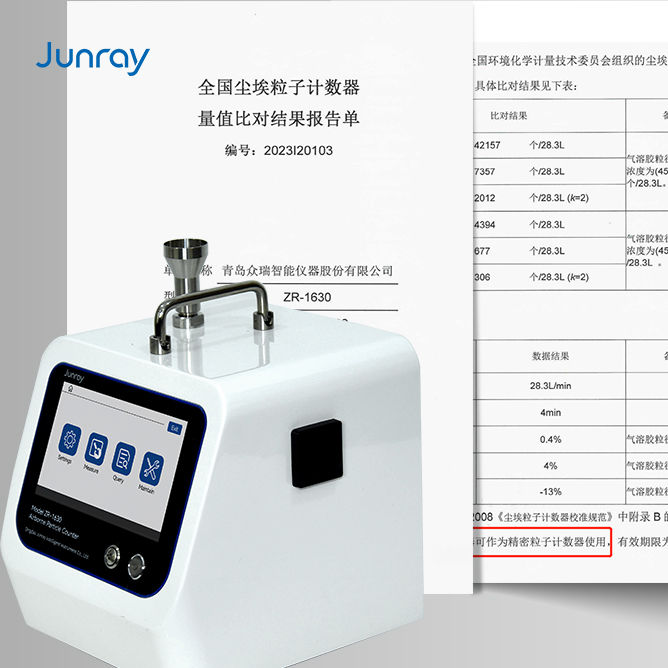How to effectively test and maintain your cleanroom classification
Cleanroom testing is vital for ensuring compliance, maintaining product quality, protecting sensitive processes, safeguarding health and safety, optimizing operations, saving costs, and building customer confidence. Regular and thorough testing helps ensure that your cleanroom continues to meet stringent cleanliness and environmental control standards, ultimately supporting the success and integrity of your operations.
Testing your cleanroom according to ISO 14644 involves several detailed steps to ensure it meets the necessary particle count allowances for its classification. Here’s a comprehensive guide.
1. Understand ISO 14644 Standards
ISO 14644-1: Defines the classification of air cleanliness by particle concentration.
ISO 14644-2: Specifies the monitoring to demonstrate continued compliance with ISO 14644-1.
 2. Preparation for Testing
2. Preparation for Testing
Determine Cleanroom Classification: Identify the specific ISO classification (e.g., ISO Class 5) applicable to your cleanroom.
Establish Sampling Locations: According to the cleanroom size and classification, determine the number and positions of sampling points.
3. Select and Calibrate Equipment
Particle Counter: Use a calibrated and validated particle counter capable of measuring the required particle sizes (e.g., ≥0.1 µm or ≥0.3 µm).

Calibration Check: Ensure the particle counter is calibrated as per manufacturer’s recommendations to guarantee accurate measurements.
4. Establish Sampling Locations
Number of Sampling Locations: Refer to ISO 14644-1, which provides guidelines on the number of sampling points based on the cleanroom area. Check the table A.1 in standard.

For large cleanrooms and clean zones (>1000㎡),apply following formula to calculate minimum sampling locations.

NL is the minimum number of sampling locations to be evaluated, rounded up to the next whole number.
A is the area of the cleanroom in m2.
Mark Sampling Points: Clearly mark the locations within the cleanroom where samples will be taken.
5. Establish single sample volume per location
Use the following formula to calculate sample volume.

Vs is the minimum single sample volume per location, expressed in liters;
Cn,m is the class limit (number of particles per cubic meter) for the largest considered particle size specified for the relevant class.
20 is the number of particles that could be counted if the particle concentration were at the class limit.
6. Conduct the Test
Measure Particle Counts: At each testing point, use the particle counter to measure the concentration of airborne particles.
Measurement Process:
Sample for a specified time at each point.
Record the number of particles for different size ranges.
Sample Replication: Perform multiple measurements at each point to account for variability and ensure consistency.
7. Data Analysis and Comparison
Analyze Data: Compare the recorded particle counts against the limits specified in ISO 14644-1 for the cleanroom class.
Acceptance Criteria: Ensure that the particle counts for each location and size range do not exceed the allowable limits.
8. Documentation
Prepare a Report: Document the entire testing procedure, including:
a. the name and address of the testing organization, and the date on which the test was performed.
b. the number and year of publication of this part of ISO 14644, i.e. ISO 14644-1:2015
c. a clear identification of the physical location of the cleanroom or clean zone tested (including reference to adjacent areas if necessary),
and specific designations for coordinates of all sampling)
d. the specified designation criteria for the cleanroom or clean zone, including the ISO Class number, the relevant occupancy state(s), and the
considered particle size(s).
e. details of the test method used, with any special conditions relating to the test, or departures from the test method, and identification of the
test instrument and its current calibration certificate, and the test results, including particle concentration data for all sampling locations.
9. Address Deviations
Investigate Sources: If any particle counts exceed allowable limits, identify potential sources of contamination.
Corrective Actions: Implement corrective measures, such as improving filtration or identifying and mitigating sources of particulate matter.
10. Continuous Monitoring
Regular Testing: Establish a regular testing schedule (every 6 to 12 months) to ensure ongoing compliance with ISO standards.
Environmental Monitoring: Continuously monitor other environmental parameters like temperature, humidity, and differential pressure to maintain
optimal cleanroom conditions.











